
Just like snowflakes, no two flagstones are the same. As a true product of nature, flagstone comes in a million different shapes, sizes, and colors depending on where it comes from. This incredible diversity helps homeowners like you create hardscapes that are truly unique.
Different flagstones don’t only look different, though. They also have varying thicknesses, textures, levels of permeability, and uses. These durable, versatile unsung heroes of landscaping can be a part of just about any hardscape you could think of.
To help you narrow down the possibilities, we’ve come up with eight flagstone ideas to incorporate in your yard.
Natural flagstone is sedimentary rock broken up into layers and used for landscaping. There are many different types of flagstone, all with their own features. Some popular varieties include sandstone, quartzite, bluestone, and limestone.
Most flagstones come in one of two shapes:
For either shape option, you can lay flagstones dry on a bed of sand or gravel (“dry-laid”) or use concrete (“wet-laid”). If you’re using thinner flagstones, it’s a good idea to lay them in concrete, as they sometimes crack easily when laid dry.
Whatever kind of landscaping project you’re working on, the cost of flagstone is typically $15 to $20 per square foot. That price covers all the materials needed, including the stone itself and sand, gravel, or concrete.
The price varies depending on what specific type of flagstone you use and whether it’s dry-laid or wet-laid. Dry-laid is typically cheaper because you won’t have to pay for concrete.
Now that we’ve covered the basics of flagstone, let’s get into our eight design ideas for using them in your landscape.
Flagstones are perfect for high-traffic areas like patios because their rough texture makes them slip-resistant.
You can easily turn your flagstone patio into an outdoor living space by adding some patio furniture and a pergola or other cover.
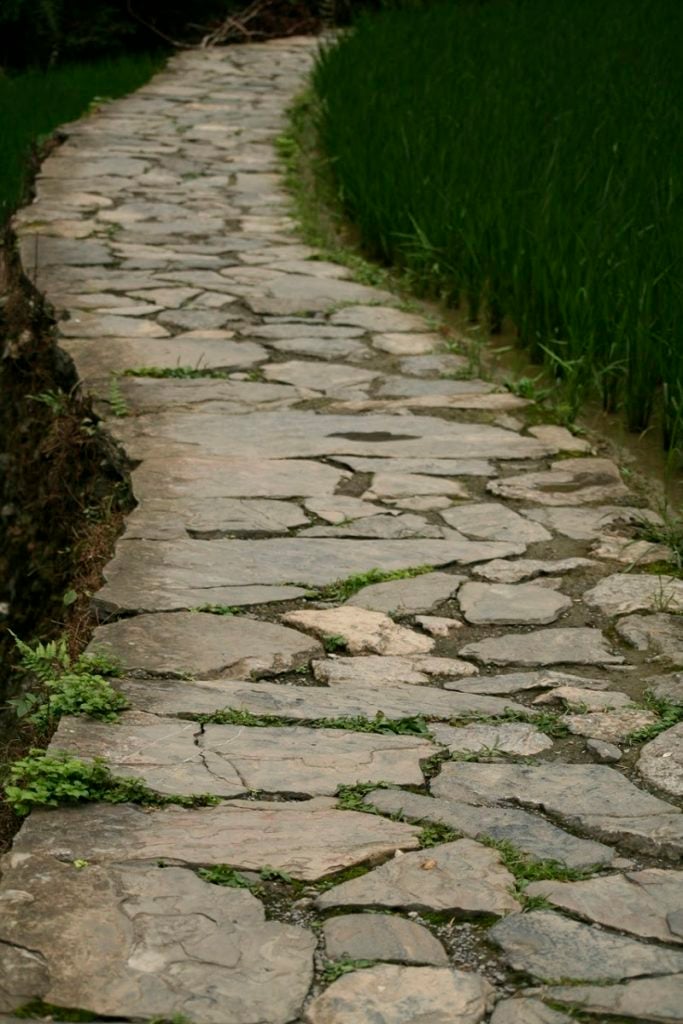
If small children, elderly relatives, or other tripping-prone guests regularly frequent your house, you can create a smooth, straight sidewalk of flagstone pavers instead.
As with flagstone patios, flagstone pathways are naturally slip-resistant because of the stone’s texture, so you won’t have to worry about your paths getting slick with rainwater.
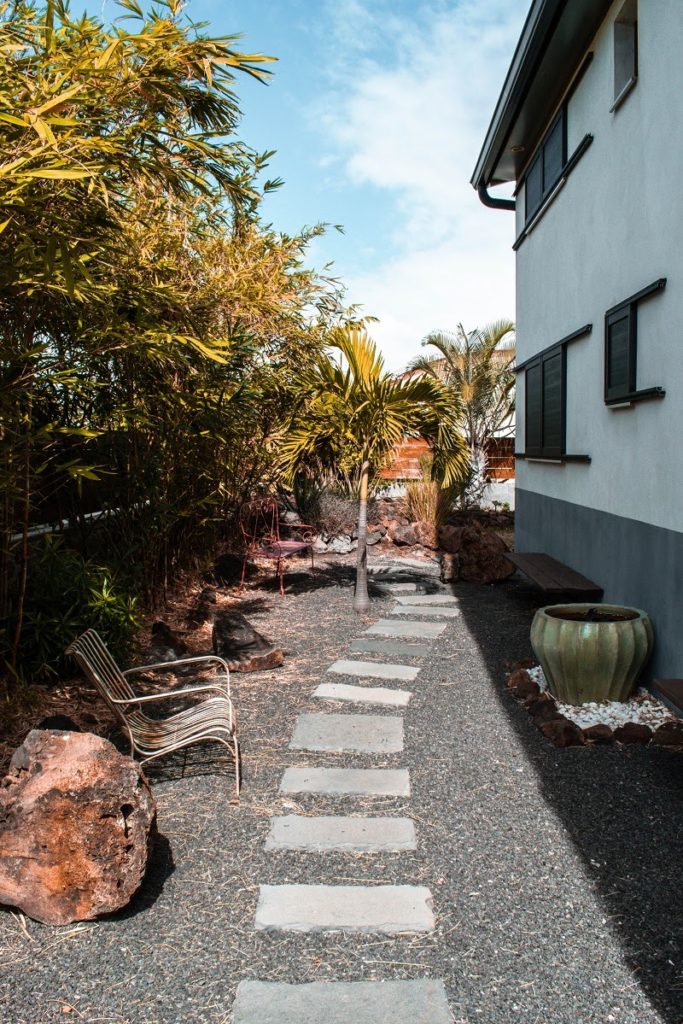
To make stepping stones, space your flagstones several inches apart and fill the gaps with pea gravel, river rock, or ground cover plants to suppress weeds. You can use pavers for a more modern look like this one or irregular flagstones for a cottage-style garden path.
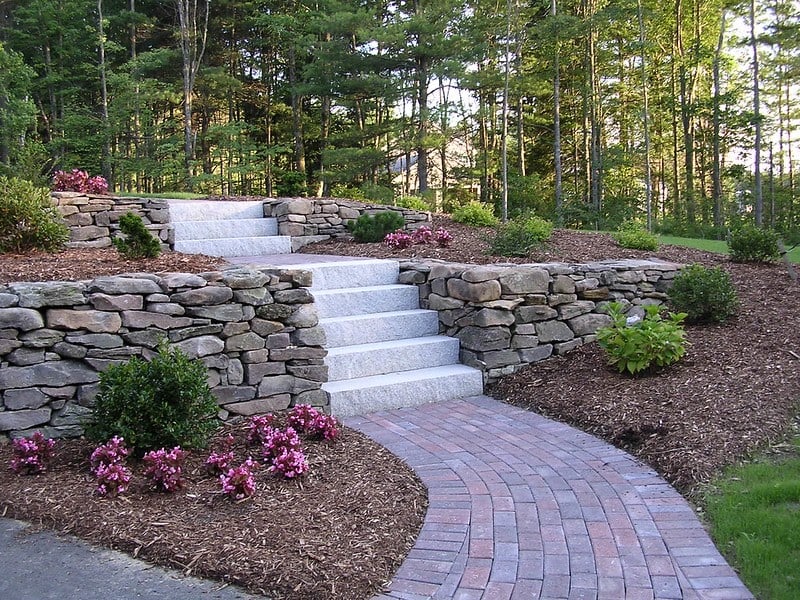
Though people might not typically use flagstones as stone for retaining walls, it is an option. You can stack flagstones to create a low wall in your landscape. Just don’t try stacking them too tall. You know what happened to Icarus when he flew too close to the sun.
When you make a retaining wall out of flagstones, you can either stack them dry or use mortar to hold them together. For a sturdier, more long-lasting wall, you should definitely consider using mortar (even though it might make your project a little more expensive).
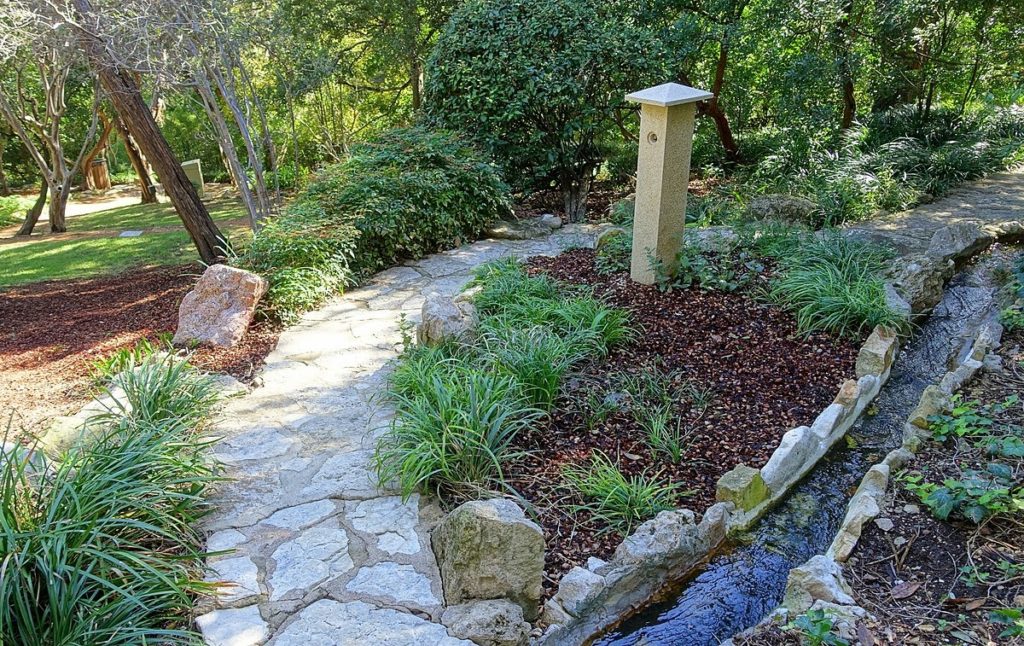
Garden edging is simply a border that goes around your landscape beds to keep grass out and make your whole yard look more polished. Again, you can achieve different looks for your garden or flower bed using different types of flagstones.
Pavers will make your landscape look more geometric and modern, while irregular flagstones (like the ones pictured) offer a wilder, more natural aesthetic. Since flagstones come in all different colors, you can find the perfect ones to match or contrast the colors of your plants.
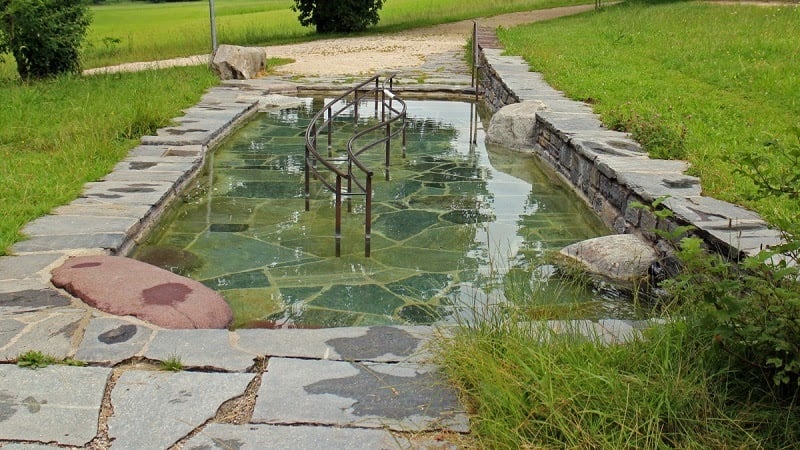
Flagstones are heavy enough to hold down liners for ponds and other similar water features, so they make great borders. Some types of flagstone are also permeable, which means they’ll absorb water instead of causing runoff if they get wet from your pond, waterfall, or fountain overflowing.